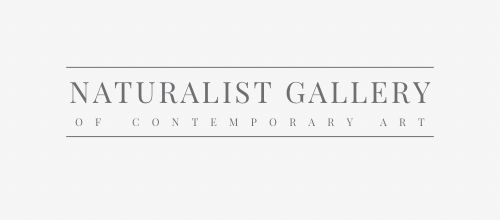In the world of contemporary art, the term "ghost artist" refers to individuals who contribute significantly to the creation of an artwork but are not publicly acknowledged. These hidden contributors, often studio assistants or interns, play an essential role in realizing the vision of famous artists. While the practice dates back to the Renaissance, when apprentices would work on large-scale projects under the guidance of master artists, the debate around authorship and ethics continues to spark discussions today.
Explore our curated selection of contemporary artists from around the globe.
Naturalist Gallery offers artist representation internationally. Apply your art.
1. Olafur Eliasson: Collaborative Creativity Danish-Icelandic artist Olafur Eliasson is known for his large-scale installations, such as the "Weather Project" at the Tate Modern, where a giant sun illuminated the museum's Turbine Hall. Eliasson operates a studio with over ninety team members, ranging from craftsmen to filmmakers. He believes in the power of collaboration and transparency, publicly crediting his entire team for their contributions. Eliasson’s approach challenges the traditional notion of solitary artistic genius and suggests a new model where art is a collective effort.
2. Jeff Koons: The Controversial Factory Model Jeff Koons is perhaps the most controversial figure when it comes to using assistants in art production. Operating one of the largest studio practices, Koons employs over 150 assistants to help create his iconic works, such as the "Balloon Dog" sculptures. While Koons claims to oversee every aspect of the production, critics argue that his reliance on assistants diminishes the authenticity of his art. Former studio assistants have described their work as "paint by numbers," revealing a production line approach that blurs the line between fine art and mass production.
3. Damien Hirst: Concept Over Craft Damien Hirst is another artist who openly relies on assistants to bring his conceptual pieces to life. Hirst's famous "spot paintings" were primarily produced by his team, with only around 25 of the 1,400 pieces painted by the artist himself. Hirst’s unapologetic stance on outsourcing the execution of his work aligns with his view that the idea behind the artwork is more important than its actual production. This approach has sparked debates about the true value of art and the role of the artist in its creation.
4. Takashi Murakami: Art as a Brand Takashi Murakami, known as the "Warhol of Japan," runs a studio that operates like a factory, with assistants working around the clock to produce his art. Murakami's practice blurs the lines between fine art and commercial production, often collaborating with celebrities and brands. His use of assistants is integral to maintaining the high volume of work demanded by his brand, demonstrating how contemporary art can function as both a creative endeavor and a commercial enterprise.
5. Kehinde Wiley: Outsourcing to China Kehinde Wiley, celebrated for his vibrant portraits, has taken a unique approach by outsourcing much of his artwork to his Beijing studio. Wiley employs several workers to produce his pieces, maintaining secrecy about the exact roles his assistants play. His method raises questions about the transparency of artistic practices and the value placed on the artist's personal touch in contemporary art.
The practice of using assistants in art production is not new, but it remains a contentious topic in the modern art world. While some artists like Olafur Eliasson embrace transparency and collaboration, others, such as Jeff Koons and Damien Hirst, are more guarded about the extent of their assistants' involvement. As the art market continues to evolve, the debate around authorship and the ethics of ghost artists will likely persist, challenging our understanding of what it means to be an artist.
Learn more About Naturalist Gallery of Contemporary Art.
You may also find the following articles helpful:
The 14 Essential Artists of Impressionism
Expressionism: 20 Iconic Paintings & Their Artists
Renaissance Art: Origins, Influences, and Key Figures
Classical Art Movement: Exploring the History, Artists, and Artworks
Figurative Art: Understanding, Collecting, and Appreciating the Style
Daily Routines of Famous Artists: Learn from the Masters
Top 12 Controversial Artworks That Changed Art History







